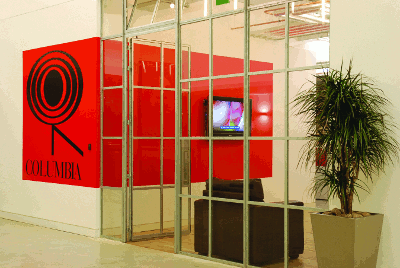Case Study: Sony Music Turns to IPTV for Business TV
Amid all the hyperbole surrounding cloudbased video hosting, the ability to distribute broadcast-quality live TV on closed wide area networks (WANs) or local area networks (LANs) seems to get a little overlooked.
This appears particularly to be the case for business TV delivered over a corporate network, which can be achieved without requiring any external internet connectivity or bandwidth. For many companies, an internet protocol TV (IPTV) solution is the only one suitable for live TV distribution without rewiring the whole building with new fibre optics. Certainly, for any new build or move to new corporate headquarters, the installation of hundreds or thousands of metres of coaxial cables for TV should no longer be required.
Those were the decisions facing Sony Mu sic Entertainment before it installed an IPTV system at its U.K. headquarters in Kensington, London.
sic Entertainment before it installed an IPTV system at its U.K. headquarters in Kensington, London.
Sony's IPTV system, which has been up and running for more than a year, streams more than 50 live broadcast television channels from digital terrestrial television (Freeview) and satellite plus show reels of its own music videos using Exterity TVgateway and PRO Encoder products, distributed across the Sony Music local area network.
The channels are available for viewing on more than 100 LCD screens placed around the building, mostly in reception and hospitality areas as well as on about 150 computer desktops using Exterity's avediaCentre.
Independent IPTV consultancy and integrator Netvue (www.netvue.co.uk) installed and configured rooftop equipment and Exterity head-end equipment as well as supported Sony Music in rolling out the IPTV receivers and desktop applications.
Why IPTV?
Mike Blacklee, facilities director for Sony Music, says he chose IPTV "because it made sense to use the IT network infrastructure as a delivery mechanism for digital quality pictures in our flagship headquarters building."
Netvue also supports the IPTV system at London's Heathrow Airport and has supplied and installed IPTV systems to postproduction facilities The Farm, Envy, and Moving Picture Company; a major international motor racing organisation; and sports data specialist Delta Tre Media for its new London offices. Despite these flagship successes, Netvue technical
director Jonathan Rackowe says not many people in the corporate sector know about IPTV.
"Most of my effort is in trying to get through doors of companies to tell them about IPTV and make them aware of the technology," Rackowe says. "Part of the problem is that video has historically been the domain of a company's AV team while anything data and internet has been handled by the IT department. IPTV falls between the two, and that's where the lack of education comes from. The IT team has grown up with data, recently adopting voice (VoIP) into its remit, but it's taken a longer time for them to realise that they will also have to take on video."
Applications for business IPTV range from live television distribution systems for news, monitoring, and office entertainment; VOD for corporate TV channels, shared media, and scheduled recording; AV distribution such as live presentations to camera; or prerecorded corporate messages and digital signage for dynamic displays of branding, information, and advertising.
The system is typically architected along the same model as Sony Music. This takes the form of a head end located in an IT room, which takes in TV signals from aerial, satellite, and local video sources such as DVD and VOD channels from servers. The signals are encoded (MPEG2 or MPEG4 H.264 compression within an MPEG2 transport stream) and output as IP
packet streams to a network core switch. These IPTV streams are distributed only to the destinations that request a channel by using multicast IT protocols IGMP (Internet Group Management Protocol) and PIM (Protocol Independent Multicast).